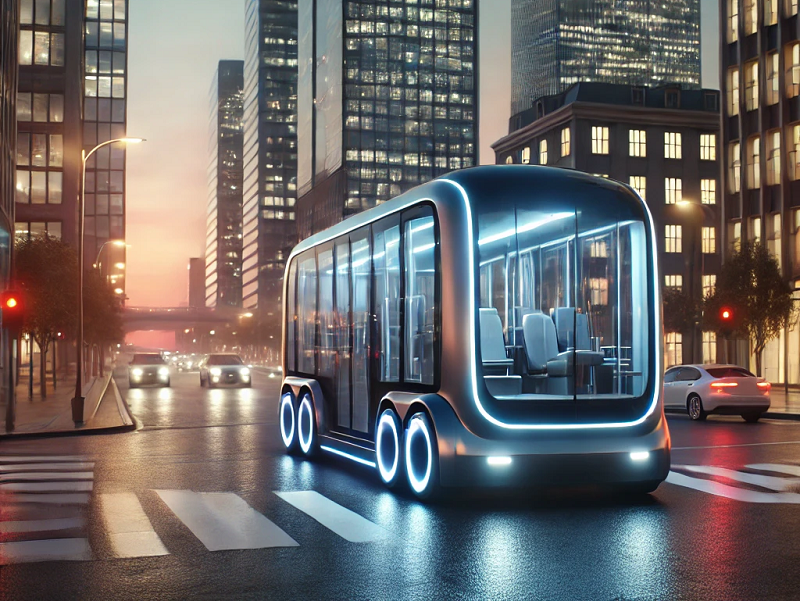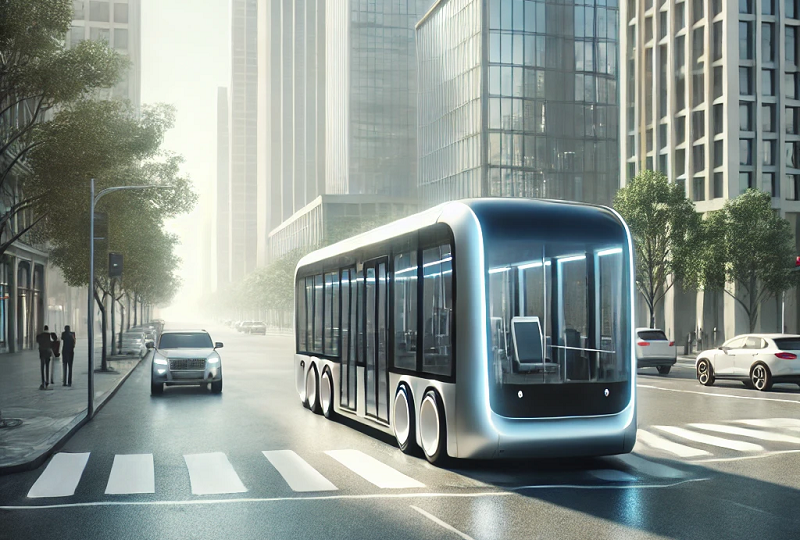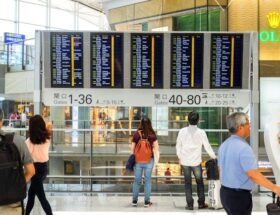As technology advances, the idea of autonomous vehicles—especially buses—is gaining attention as a potential game-changer for public transportation. Autonomous buses could offer a future where transportation is more efficient, cost-effective, and accessible. But is this vision realistic? Let’s explore how autonomous buses may work, the potential benefits and challenges, and what their future could hold.
How Would Autonomous Buses Work?
Autonomous buses, much like self-driving cars, would rely on a combination of cutting-edge technologies to operate without human drivers. They would likely use sensors, cameras, radar, and LiDAR (light detection and ranging) to “see” their surroundings, while advanced software would process this data to make real-time decisions. These buses would use AI algorithms to identify obstacles, adjust speed, and follow traffic rules.
Autonomous buses would operate using a combination of GPS for navigation, digital maps for route planning, and communication with traffic lights and other vehicles (known as V2X technology) to optimize efficiency and safety. Likely powered by electricity, these buses would contribute to environmental sustainability.
The Potential Benefits of Autonomous Buses
The introduction of autonomous buses could bring a number of advantages:
- Increased Efficiency: Autonomous buses would follow optimized routes in real time, potentially reducing traffic congestion. They would not be prone to the human errors that cause many accidents and delays.
- Cost Savings: While the initial investment in autonomous technology would be high, there could be long-term savings due to reduced labor costs, fewer accidents, and optimized energy consumption.
- Enhanced Safety: Without the risk of human error, autonomous buses may improve overall road safety. Their sensors and AI systems could respond more quickly to potential hazards than human drivers.
- Improved Accessibility: Autonomous buses might increase mobility for people with disabilities or the elderly, offering more consistent, reliable service. This could also extend transportation services to underserved areas, filling gaps where human-driven buses are less frequent.
- Environmental Impact: Many autonomous bus prototypes are electric, reducing emissions. When combined with optimized driving patterns, they could play a role in reducing the carbon footprint of urban transport.

Challenges Autonomous Buses May Face
Despite the potential benefits, autonomous buses would face several challenges:
- Safety Concerns: While the technology continues to improve, concerns remain about the safety of autonomous vehicles. Accidents involving autonomous cars, though rare, have sparked debates about the readiness of AI to take control of public transportation.
- Job Displacement: A transition to autonomous buses could result in job losses for bus drivers. This raises significant economic and social concerns, as public transit employs a large workforce in many regions. Thoughtful policies would be necessary to address retraining and support for those affected.
- Technology Limitations: Although autonomous systems are becoming more advanced, they still struggle in extreme weather conditions like heavy rain or snow. Ensuring reliable operation in all environments remains a hurdle for the widespread use of autonomous buses.
- Legal and Regulatory Barriers: Autonomous buses would require updated regulations, from traffic laws to liability rules. For example, if an accident occurs, who is responsible—the manufacturer, the software developer, or the city? Governments would need to address these issues before autonomous buses became mainstream.
- Infrastructure Needs: Autonomous buses may require significant infrastructure upgrades. Smarter traffic systems, dedicated lanes, and more could be needed to ensure smooth operations. These upgrades could come with high costs, which cities would need to weigh against the potential benefits.
The Likely Future of Autonomous Buses
What does the future hold for autonomous buses? While we aren’t likely to see fully autonomous fleets dominating the streets anytime soon, progress is already underway. Cities like Las Vegas, Paris, and Helsinki have started pilot programs with autonomous shuttles on limited routes, offering a glimpse of what could come.
Short-Term (Next 5-10 Years): In the near future, autonomous buses are potentially likely to operate in controlled environments such as university campuses, business parks, or airport shuttles. These closed systems would reduce the complexity of navigating public roads and provide a safer testing ground.
Long-Term (10-20 Years and Beyond): Over time, as technology advances and public trust grows, autonomous buses may expand to urban environments. They could offer dynamic, on-demand services that adjust to real-time traffic and passenger needs, fully integrated into the smart cities of the future. However, traditional driver-operated buses will likely continue to serve in rural areas or places without the necessary infrastructure.

Final Thoughts
While the concept of autonomous buses is filled with promise, their widespread adoption is still in the early stages. If successfully implemented, they could bring about a revolution in public transportation—making it safer, more efficient, and accessible to more people. However, significant challenges remain, from technological and safety concerns to potential job losses and infrastructure upgrades.
Autonomous buses may reshape how we navigate cities, but for now, the journey toward this future is just beginning.
Thanks for reading!
— GertieBlu









